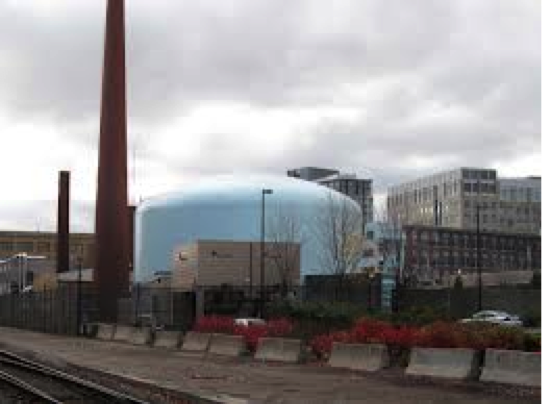The Stirling Engine
Although the Stirling engine is less visible compared to other types of heat engines, it has been existent since 1816. Reverend Robert Stirling, a Scottish minister, invented this engine to function as a good alternative to steam engine (Bonnick 96). Back then, steam engines were considered less safe, especially due to risks of boiler explosions.
Unlike steam engines, Stirling engines function through external combustion and contain a cylinder that seals gas (e.g. helium, hydrogen and gas). The gas is then mechanically heated and cooled. The heating mechanism (“regenerator”) causes the gas to expand, subsequently driving the piston and generator. The gas contracts when transferred to the cold side, thus functioning as an “air-cooled heat exchanger” (Andrews and Jelley 216).
In terms of configuration, Stirling engines are categorized into two: the two-piston type and the displacer type, as shown below.


In the two-piston type, the engine contains pistons with spaces in separate cylinders that are continuously heated and cooled. In the displacer type Stirling engine, an insulated displacer piston displaces the air from the hot to the cold side of the displacer.
The Stirling engine has its tradeoffs. On the one hand, it is quiet, has an excellent thermal efficiency, with very little to unknown emissions during engine start-up. On the other hand, the engine takes more time before it warms up, more bulky, and needs accurate machination compared to other types of commercial engines (National Research Council 63). This explains why Stirling engines are relatively uncommon for commercial use.
Despite the limitations of this mechanical technology, one can find uses of Sterling engines in a number of areas. This engine has been continuously developed for solar power technology and biomass energy. A 10 to 25 Kilowatt generator with this engine usually supplies electricity in rural areas (Andrews and Jelley 216). Stirling engines are also used in submarines, heat pumps, and as cryocoolers.
Stirling Engine in a Submarine

Works Cited
Andrews, John and Nick Jelley. Energy Science: Principles, Technologies, and Impacts. Oxford: Oxford University Press, 2007. Web. 27 October 2013. <http://books.google.com/>.
Bonnick, Allan. Automotive Science and Mathematics. Elsevier: Burlington, MA, 2008. Web. 27 October 2013. <http://books.google.com/>.
“Google Images.” 2013. Web. 27 October 2013. <https://www.google.com/>.
National Research Council. Review of the Research Program of the Partnership for a New Generation of Vehicles. Washington, DC: National Academy Press, 1997. Web. 27 October 2013. <http://books.google.com/>.













